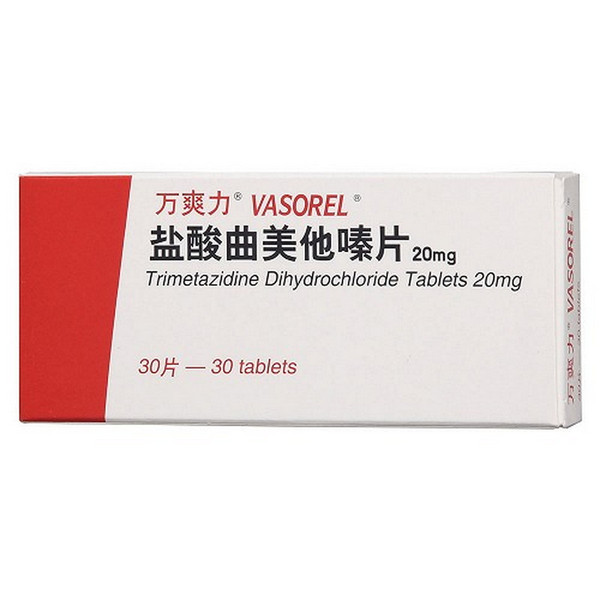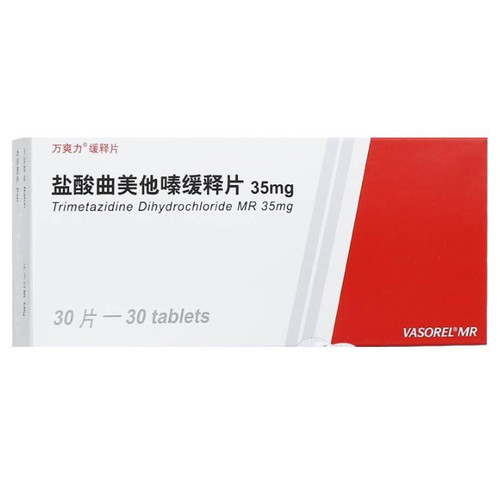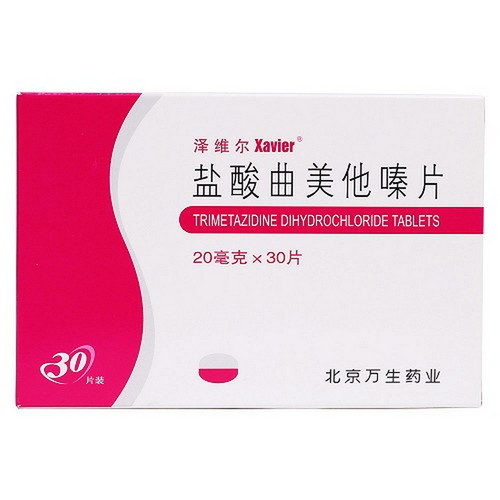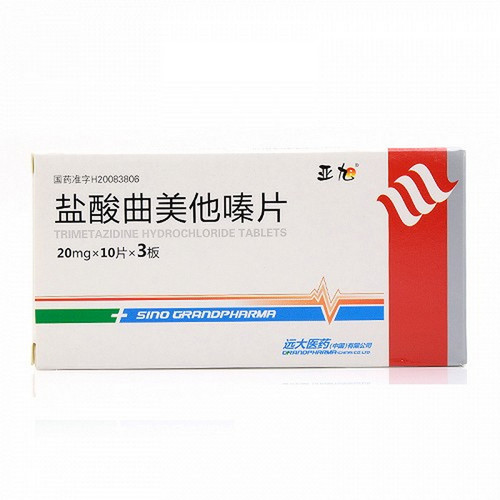Product Overview
[Drug Name]
Generic Name: Trimetazidine Hydrochloride Tablets
Trade Name: Wanshuangli
English Name: Trimetazidine Dihydrochloride Tablets
Chinese Pinyin: YanSuanQuMeiTaqinPian
[Ingredients]
The active ingredient of this product is trimetazidine hydrochloride. Its chemical name is: 1-(2,3,4-trimethoxybenzyl)piperazine dihydrochloride. Molecular formula: C₁₄H₂₂N₂O₃.2HCL. Molecular weight: 339.3
[Properties]
This product is a film-coated tablet that appears off-white after removal of the film coating.
[Indications]
Preventive treatment of angina pectoris attacks, adjunctive symptomatic treatment of vertigo and tinnitus.
[Dosage and Administration]
60 mg every 24 hours: Take one tablet three times daily with meals. Evaluate the therapeutic effect after three months; discontinue the drug if no therapeutic effect is seen.
[Adverse Reactions]
Rare gastrointestinal discomfort (nausea, vomiting). Extremely rare Parkinson's symptoms, such as tremor, rigidity, and akinesia, may resolve after discontinuation of the drug. Allergic reactions may occur due to the presence of sunset yellow FCFS (E110) and carmine (E124) in the supplement.
[Contraindications]
This medication is contraindicated in patients with allergies to any of the components. Its use is generally not recommended during breastfeeding.
[Precautions]
This medication is not intended for symptomatic treatment of angina pectoris or initial treatment of unstable angina or myocardial infarction. It should not be used for treatment before or during the first few days after hospitalization. During an angina attack, coronary artery disease should be reassessed, and treatment adjustments (medication and possible revascularization) should be considered.
[Use in Special Populations]
Precautions for Pediatric Use:
The safety and efficacy of this medication in children have not been established.
Precautions for Pregnancy and Lactation:
Pregnancy: Animal studies have not shown teratogenic effects; however, due to the lack of clinical data, the risk of teratogenicity cannot be completely ruled out. Therefore, for safety reasons, it is best to avoid taking this medication during pregnancy. Breastfeeding: Due to a lack of data on breast milk secretion, breastfeeding is not recommended during treatment.
Precautions for Elderly Patients:
See other sections or follow your doctor's advice.
[Drug Interactions]
To avoid potential drug interactions, you must inform your doctor or pharmacist of any other treatments you are taking.
[Pharmacological Actions]
Belonging to another class of antianginal cardiovascular drugs, trimetazidine protects cellular energy metabolism during hypoxia or ischemia by preventing the decline in intracellular ATP levels, thereby ensuring the normal function of ion pumps and transmembrane sodium-potassium flux, and maintaining a stable intracellular environment. Animal studies have shown that trimetazidine: 1. Helps maintain energy metabolism in the heart and neural sensory organs during ischemia and hypoxia. 2. Reduces intracellular acidosis and ischemia-induced changes in transmembrane ion flux. 3. Reduces the migration and infiltration of polymorphonuclear neutrophils during ischemia and myocardial reperfusion, and reduces experimental infarct size. 4. This effect occurs without significant effects on hemodynamics. Human studies: Controlled trials in patients with angina pectoris have shown that trimetazidine can: 1. Increase coronary blood flow reserve, thereby delaying the onset of exercise-induced ischemia starting 15 days after treatment. 2. Limit rapid fluctuations in blood pressure without significantly altering heart rate. 3. Significantly reduce the frequency of angina attacks. 4. Significantly reduce the need for glyceryl trinitrate.
[Storage]
Store in a cool, dark area (below 20°C).
[Strength]
20 mg
[Packaging]
30 tablets per box.
[Expiration]
36 months
[Approval Number]
National Medical Products Administration Approval Number H20055465








